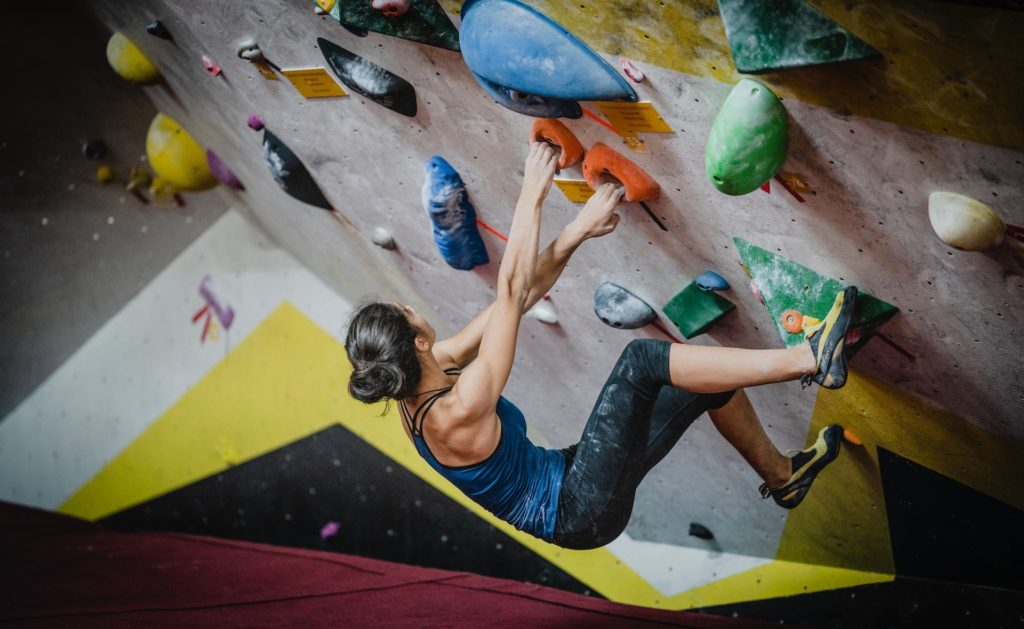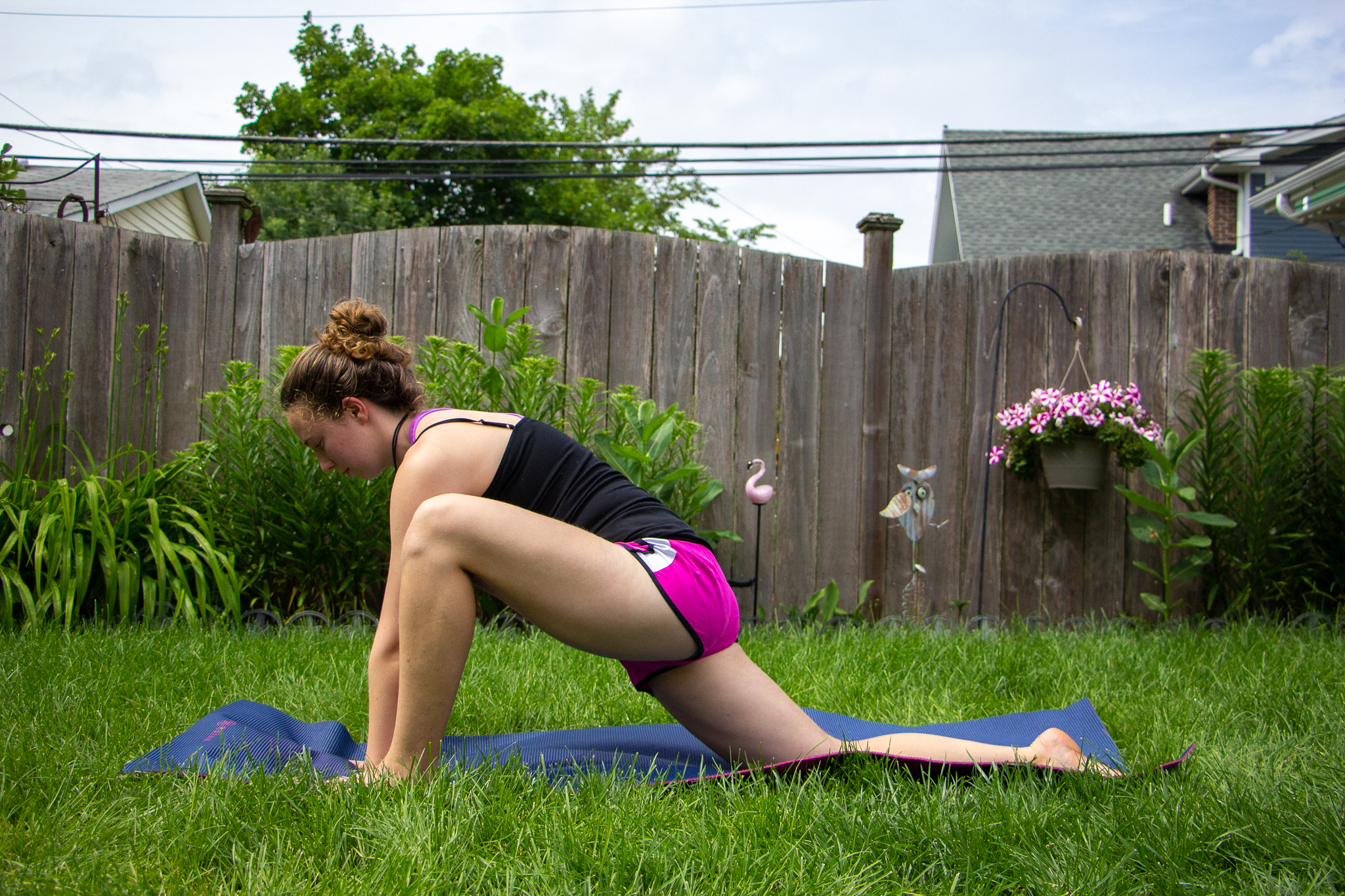I have been rock climbing for years and I was hooked from the moment I started going. It’s fun, it tones your muscles, and it’s very sociable. So if you’re looking to experience a new form of exercise, rock climbing is a great option to try out. But before you book in for your first session, here are seven things you should know about the sport.

There are different types of rock climbing
It’s easy to assume that rock climbing is a one-dimensional sport, yet there are many different forms of climbing. In general, the aim is to follow a colored route up a wall, reach the top hold, tap it and then come back down. Bouldering is one of the more mainstream and popular options—this means you climb up a short distance and come back down again without any roped support.
There is also roped climbing—this is where you climb at a greater distance and are supported by a rope, to which someone will be attached at the other end, tightening and loosening the rope as required. At some venues you might want to try out auto belay— this is roped climbing, but instead of a person supporting you, you are attached to an automatic rope system, which will tighten and loosen your rope depending on your needs. It’s very fun, and scary, to come down a wall on one of these!
The other main form of rock climbing is outdoor climbing. This is mostly undertaken by advanced climbers who will find small rock faces to climb outdoors, with a handy crash pad tucked underneath for safety. Maybe you’ll want to try this out in the future?
You’ll need to have a training session
Rock climbing is perfectly safe and even young children take part in roped climbs! When you’re bouldering, there is always a carpet of thick, soft mats prepared to catch you, but you’re never climbing far up. For higher climbs, you’ll always be strapped onto a rope, with someone watching out for you. But like many other sports, you’ll still need a training session to ensure you know how to safely navigate the wall. If you’re bouldering, which is what I would recommend trying out first, you’ll be shown how to climb and come down safely. If you want to train for roped climbing, you’ll be shown the process of acting as the climber and the supporter, who manages the rope at the bottom. Plus, you’ll learn some interesting rope knots!
Warming up is key—it’s very easy to pull a muscle.
You’ll soon find out that rock climbing requires you to bend and twist parts of your body in a myriad of ways. For this reason, it’s really important to have a dedicated warm-up session before you climb. I can’t count the number of times I have come away with a pulled muscle because I hadn’t spent long enough warming up and cooling down. This is really important to ensure you stay safe before and after you climb. I would recommend spending ten minutes stretching each part of your body, (especially your neck!), and starting by climbing easier routes while your body warms up.
It will take a while to get used to the shoes
It goes without saying that you should wear stretchy clothing when you climb, but there are also a few tools that are necessary for success. Chalk can be purchased online or at the venue—this is for your hands and will help you grip the holds. If you want, you can wear trainers for your first couple of climbs, but it is recommended to rent out some climbing shoes, as trainers will be awkward to navigate the holds when you climb. Climbing shoes are very tight and should hug your feet to ensure you can fit them on and into holds. At first, they will feel foreign and uncomfortable. This is because you’re generally meant to wear shoes that closely match the size of your feet. It will take a while to get used to them, but it’s worth it to stick with them.
Rock climbing has its own ecosystem
Like many other sports, rock climbing can seem like it has its own ecosystem. There are different bouldering grades, different types and names of holds, and people have their own chalk, bags, and shoes. At first, it might seem a bit daunting, but if you decide to carry on climbing, you’ll soon pick it all up naturally. To begin with, all you need to know is the color of the route you’re climbing and how to climb it!
It’s hard work—but it’s rewarding
At first, you’ll be climbing on the easier routes, which will be nice and straightforward. The holds will be generous and easy to grasp, and you’ll have no problem reaching the top. As you progress in difficulty, it will become much harder. You’ll use muscles you never knew you had, and your fingers and toes will be instrumental in achieving success. Due to the difficulty, it’s recommended to take regular breaks, drink water, and give your feet a break from your shoes.
There are many different grades of difficulty, and sometimes the jump between them will feel vast—but once you’ve mastered one grade, you’ll be excited to try out the next. It can be very hard work, but you soon pick up techniques and strategies for reaching the top. If you feel like you’re not ready to move on to the next grade, it is useful to know that routes are often changed around regularly, meaning you’ll be able to try out the same grade in a different format.
Rock climbing is a very sociable sport
If you’re looking to meet new people, then rock climbing is definitely the sport for you. While there are some people who want to climb in solitude, rock climbing is surprisingly social. People will often strike up a conversation, try and help you out with a route, or just admire your techniques. It’s very easy to meet new people when you’re climbing regularly and for this reason, it’s a big pull for someone taking up the sport.
Rock climbing is an incredibly fun sport, and it’s become popular enough that most cities and towns will have a climbing station nearby. If you’re planning to climb soon, these tips should help you acclimate yourself to the sport. Or, if you’re ever in doubt, you can always ask the team at the venue to help you—after all, that’s what they are there for!
Get more like this—Sign up for our daily inspirational newsletter for exclusive content!
__
Photo: Rahadiansyah via Unsplash




